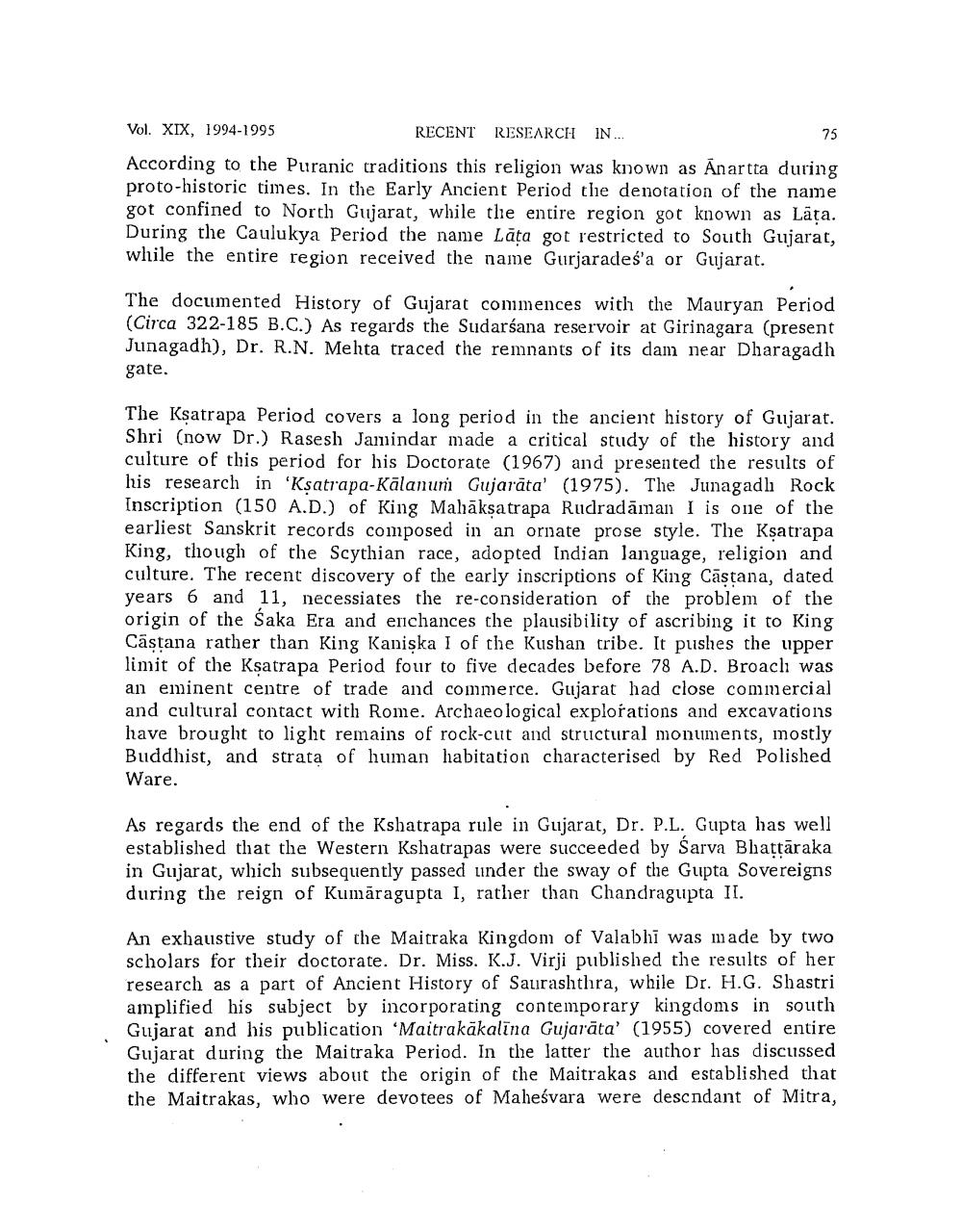________________
Vol. XIX, 1994-1995 RECENT RESEARCH IN...
75 According to the Puranic traditions this religion was known as Anartta during proto-historic times. In the Early Ancient Period the denotation of the name got confined to North Gujarat, while the entire region got known as Lāța. During the Caulukya Period the name Lāta got restricted to South Gujarat, while the entire region received the name Gurjarades'a or Gujarat.
The documented History of Gujarat commences with the Mauryan Period (Circa 322-185 B.C.) As regards the Sudarsana reservoir at Girinagara (present Junagadh), Dr. R.N. Mehta traced the remnants of its dam near Dharagadh gate.
The Ksatrapa Period covers a long period in the ancient history of Gujarat. Shri (now Dr.) Rasesh Jamindar made a critical study of the history and culture of this period for his Doctorate (1967) and presented the results of his research in 'Ksatrapa-Kalanum Gujarāta' (1975). The Junagadli Rock Inscription (150 A.D.) of King Mahäksa trapa Rudradāman I is one of the earliest Sanskrit records composed in an ornate prose style. The Ksatrapa King, though of the Scythian race, adopted Indian language, religion and culture. The recent discovery of the early inscriptions of King Cāstana, dated years 6 and 11, necessiates the re-consideration of the problem of the origin of the Saka Era and enchances the plausibility of ascribing it to King Cāstana rather than King Kaniska I of the Kushan tribe. It pushes the upper limit of the Ksatrapa Period four to five decades before 78 A.D. Broacli was an eminent centre of trade and commerce. Gujarat had close commercial and cultural contact with Rome. Archaeological explorations and excavations have brought to light remains of rock-cut and structural monuments, mostly Buddhist, and strata of human habitation characterised by Red Polished Ware.
As regards the end of the Kshatrapa rule in Gujarat, Dr. P.L. Gupta has well established that the Western Kshatrapas were succeeded by Sarva Bhattāraka in Gujarat, which subsequently passed linder the sway of the Gupta Sovereigns during the reign of Kumāragupta I, rather than Chandragupta II.
An exhaustive study of the Maitraka Kingdom of Valabhi was made by two scholars for their doctorate. Dr. Miss. K.J. Virji published the results of her research as a part of Ancient History of Saurashthra, while Dr. H.G. Shastri amplified his subject by incorporating contemporary kingdoms in south Gujarat and his publication 'Maitrakākalīna Gujarāta' (1955) covered entire Gujarat during the Maitraka Period. In the latter the author has discussed the different views about the origin of the Maitrakas and established that the Maitrakas, who were devotees of Maheśvara were descndant of Mitra,




